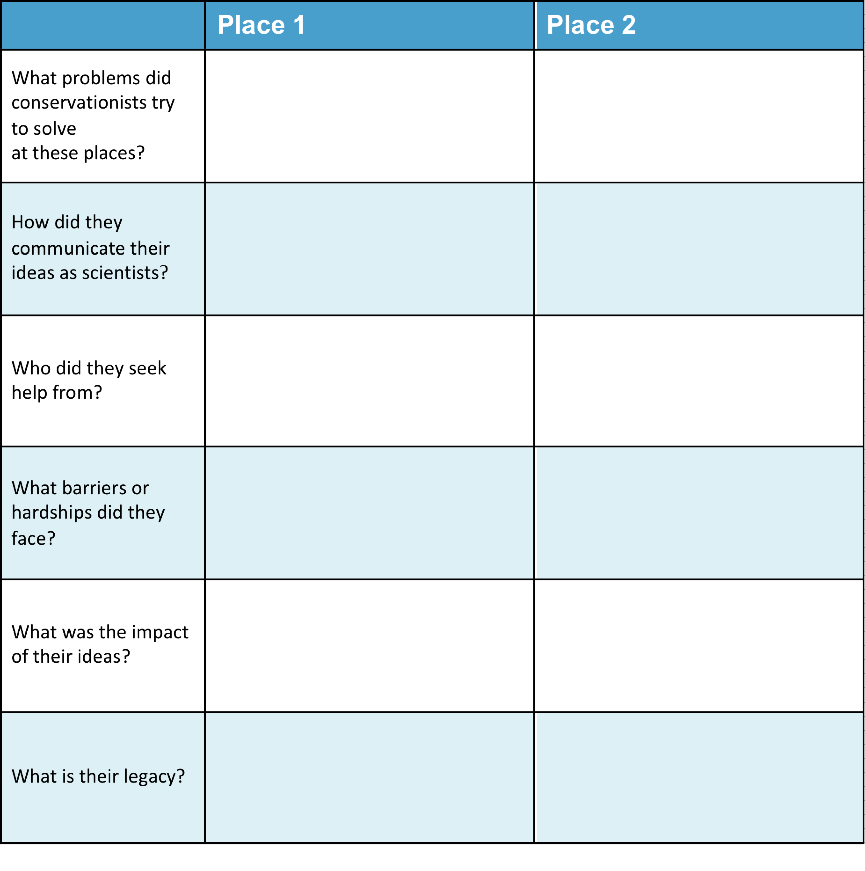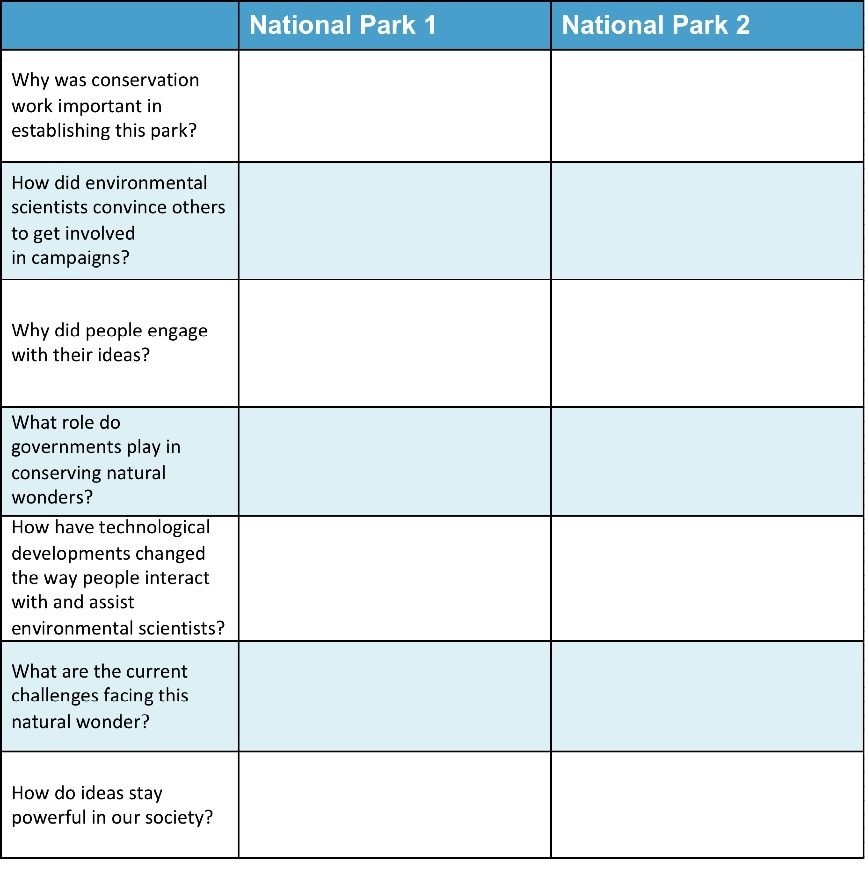Information for Teachers
Curriculum links
Australian Science Standards
GS (ACHASSK113) The environmental and human influences on the location and characteristics of a place and the management of spaces within them
SS01.4 World views recognise the dependence of living things on healthy ecosystems, and value diversity and social justice
New Zealand Science Achievement Objectives
LW: The importance of variations within a changing environment
LW: The impact of natural events and human actions on an ecosystem
NS: Scientists’ investigations are informed by current scientific theories and aim to collect evidence that will be interpreted through processes of logical argument
Helpful websites
You may want to direct your students to websites to help with their investigations.
Students may want to learn more about the environmentalists introduced in this book. They can do this by using words, e.g. John Muir+glaciers, John Muir+Yosemite, or search using key words like Protecting+natural places
How to search the internet
1 Keep your request short
Fewer words will give a more accurate search.
2 Choose exactly what you want
For example: Arctic Circle Climate
3 Use quotes
Double quotes around a set of words tell the search engine to consider those exact words in that exact order without any change. For example: “Arctic Circle Climate”
4 Use the plus sign (+)
If you add a plus sign (+) between words, the internet will search for all the words. For example: migrate+birds+whales+mammal
5 Use the minus sign (–) to say what you don’t want
Use a minus sign (–) to show words you do not want to appear in your results. For example: if you search for burrowing animals and do not want mammals in your search, –mammals will exclude mammals. Note that you need to put a space before the minus sign for the word to be excluded.
6 Be very clear about what you don’t want
Part 1
Ask questions and make predictions
After reading Powerful Ideas: Establishing National Parks, you may have many questions about passionate scientists who have involved people in their research activities.
List your questions
- Compare your list with questions that others have.
- Choose a question you would like to investigate.
- You can work alone, with a partner, or in a small group.
You may want to choose one or more of these questions to investigate
Q1. How do some areas become national parks?
Q2. What does this mean for people visiting these areas?
Q3. What did the conservationists in this book do?
Q4. What is similar about their work?
Q5. How did they communicate their powerful ideas about the environment?
Go to Part 2 Plan and investigate →Part 2
Plan and investigate
Do searches in the internet or in books or talk to people who can help to find the information you are looking for.
Your teacher may suggest suitable websites for further information.
Go to Part 3 Record and analyse data →Part 3
Record and analyse data
Find a way of recording your information that will allow you to see any patterns in the data.
Data Chart for Powerful Ideas: Establishing National Parks
(Download and change to suit your information)
 Download Chart
Download Chart
Go to Part 4 Evaluate the information →
Part 4
Evaluate the information
1. Look over the information you have gathered and the patterns you have found.
Why were these conservationists important?
How did they try to convince others?
2. Search for other patterns.
Why did people and groups engage with their conservation ideas?
3. Makes notes about what you find.
Go to Part 5 Communicate and share ideas →Part 5
Communicate and share ideas
Look over all of the information that you have gathered in your investigation.
Make a chart showing the most important ideas.
 Download Chart
Download Chart
← Return to menu
